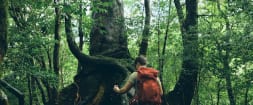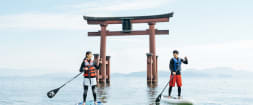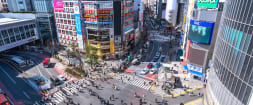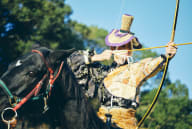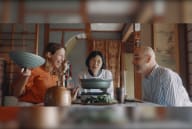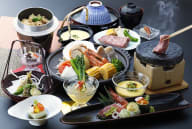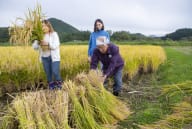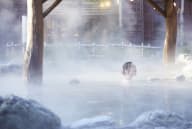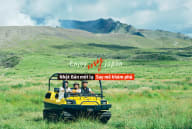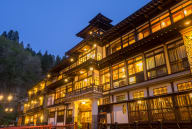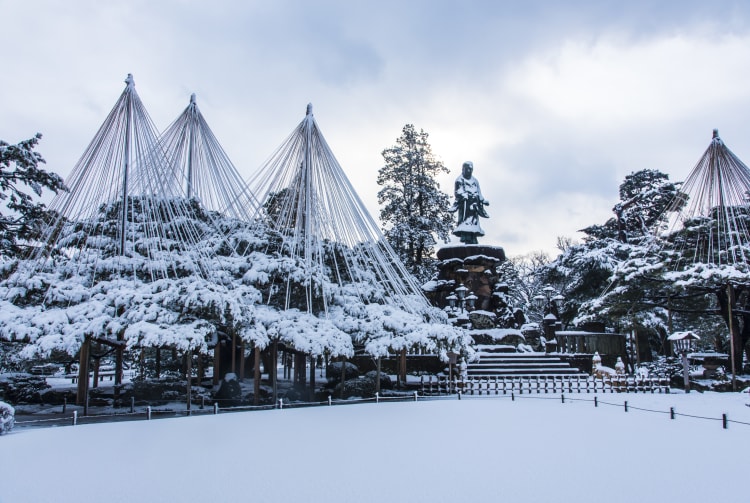Một trong ba khu vườn nổi tiếng nhất của Nhật Bản
Vườn Kenrokuen là tâm điểm của Kanazawa và có lịch sử lâu đời nổi tiếng. Gia tộc Maeda đã kiến tạo khu vườn này qua hàng trăm năm và ngày nay khu vườn là một trong những ví dụ điển hình nhất về vườn cảnh quan Nhật Bản dành để đi dạo. Bất cứ mùa nào trong năm khu vườn đều có nét độc đáo để bạn thưởng thức.
“Kenrokuen” có nghĩa là “khu vườn kết hợp sáu đặc trưng”. Sáu đặc trưng này bao gồm sự rộng rãi, tách biệt, giả tạo, cổ kính, nguồn nước chảy và quang cảnh tráng lệ. Không phải khu vườn nào ở Nhật Bản cũng có thể kết hợp tất cả các đặc trưng này nhưng Kenrokuen lại có thể.
Đừng bỏ lỡ
- Đài phun nước hoạt động tự nhiên bên dưới Hồ Kasumigaike, có thể phun nước cao đến 3,5 m
- Dinh thự Seisonkaku mang hai phong cách kiến trúc Nhật Bản riêng biệt
- Đèn lồng Kotojitoro, biểu tượng của khu vườn, nổi tiếng với thiết kế hai chân
Phương thức di chuyển
Bạn có thể dễ dàng đến Kenrokuen bằng xe buýt từ Ga Kanazawa .
Chuyến đi sẽ mất 20 phút và giá vé là 200 yên. Ngoài ra, người có vé JR Rail Pass có thể sử dụng vé này để đi xe buýt JR đến Korinbo. Khu vườn là trung tâm của nhiều điểm tham quan chính tại Kanazawa.

Lịch sử phát triển của khu vườn
Kenrokuen từng là khu vườn tư nhân thuộc sở hữu của gia tộc Maeda, gia tộc đã trị vì phiên Kaga từ Thành Kanazawa . Gia tộc Maeda là một trong những gia tộc quyền lực nhất ở Nhật Bản vào thời phong kiến, chỉ đứng sau gia tộc của tướng quân. Khu vườn cảnh quan này bắt đầu được xây dựng vào năm 1676 với tên gọi Renchitei và tiếp tục phát triển qua ba thế kỷ.
Năm 1822, khu vườn lấy tên theo tên hiện tại và được mở cửa cho công chúng vào năm 1874.
Trải nghiệm về chánh niệm thời samurai
Mọi nét đặc trưng của khu vườn Nhật Bản truyền thống đều hiện diện ở đây: ao nước, đèn lồng bằng đá, thác nước, lối đi lát đá, cây cầu, dòng suối, phòng trà và đồi nhân tạo. Trong môi trường tự nhiên này, bạn có thể dễ dàng dành ít nhất vài tiếng đồng hồ để tận hưởng bầu không khí yên bình, được thiết kế cho các buổi tu thiền vào thời phong kiến.

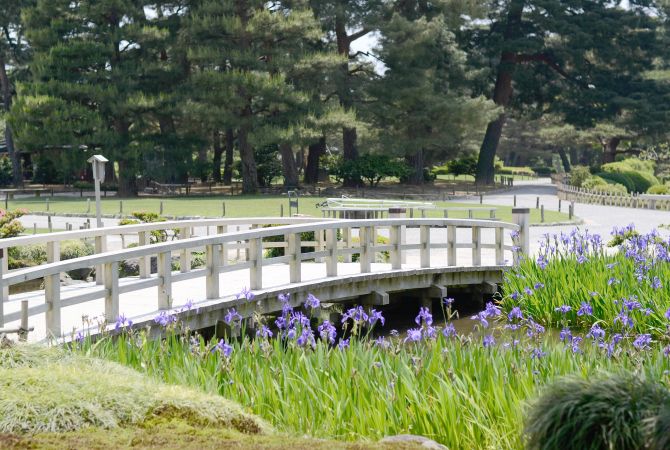
Thưởng thức Kenrokuen vào bất cứ mùa nào
Vào mùa xuân, đầu tiên là hoa mận sau đó là hoa anh đào nở, vào mùa hè, có rất nhiều loại hoa để ngắm, ví dụ như hoa đỗ quyên. Vào mùa thu, khu vườn trở nên sống động với những chiếc lá phong Nhật Bản đỏ rực. Từ “momijigari” dùng đển chỉ việc thưởng ngoạn cảnh lá phong tuyệt đẹp và khu vườn này là địa điểm để bạn thưởng ngoạn cảnh sắc đó. Đến mùa đông, những cây thông được tuyết phủ dọc theo hồ nước tạo nên khung cảnh đầy lãng mạn. Những cây thông này cũng được chiếu sáng trong khoảng thời gian ngắn vào tháng 1 và tháng 2.
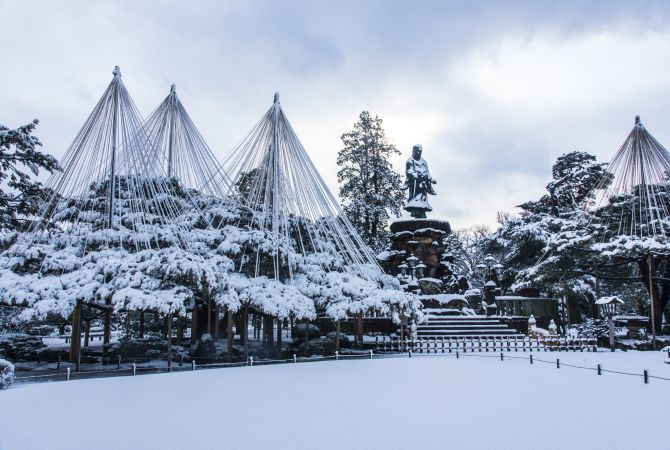



Yukitsuri
Cây cối được căng những sợi dây thừng
Bạn có thể nhận thấy rằng cây thông vào mùa đông ở Nhật Bản thường có vật trông giống chiếc ô bằng dây thừng căng từ cọc sào phía trên ngọn cây xuống tới các nhánh thấp hơn. Đây là yukizuri, giàn dây thừng hình nón được dựng lên để đỡ các nhánh cây, nhờ đó ngăn những nhánh cây này khỏi bị gãy do sức nặng của lượng tuyết rơi dày vào mùa đông. Xét cho cùng thì đây đều là cây cổ thụ – đặc biệt là cây thông 200 năm tuổi nổi tiếng của Kenrokuen. Yukizuri bắt đầu được dựng lên từ ngày 1 tháng 11 và giữ nguyên đến khoảng ngày 15 tháng 3.
Dinh thự Nhật Bản truyền thống tráng lệ
Ở góc đông nam của khu vườn, bạn sẽ tìm thấy dinh thự do Lãnh chúa Nariyasu Maeda xây dựng vào năm 1863 để làm nơi dưỡng lão thoải mái dành cho mẹ ông. Kiến trúc hai tầng đồ sộ này được xây dựng theo hai phong cách. Tầng chính được xây dựng theo phong cách gọi là buke-shoin, một kiểu thiết đặt trang trọng để đón tiếp khách, còn thiết kế của tầng thứ hai được gọi là sukiya-shoin, nổi bật với màu đỏ, xanh và tím, tạo nên không gian vui tươi và thư thái hơn.
Dinh thự Seisonkaku cũng hoạt động như một bảo tàng trưng bày búp bê, kimono và tranh vẽ.
Xung quanh Kenrokuen
Khu vườn này nối liền với Thành Kanazawa . Bạn chỉ cần băng qua cây cầu khi ra khỏi cổng Ishikawa là đến được thành. Con đường dành cho người đi bộ nằm bên ngoài cánh cổng Katsurazaka, có các nhà hàng và quán cà phê dọc hai bên đường phục vụ món ăn trưa bình dân, trà và kem dát lá vàng. Nhiều quán cà phê, cửa hàng và thậm chí cả bảo tàng đều cung cấp lá vàng dưới nhiều hình thức khác nhau. Sự hiện diện cực kỳ mạnh mẽ của nghệ thuật và thủ công truyền thống ở Kanazawa phản ánh sức mạnh và sự giàu có của gia tộc Maeda cùng lòng nhiệt thành của họ đối với nghệ thuật.
Bạn có thể đi bộ đến một số bảo tàng gần đó, bao gồm Bảo tàng Nghệ thuật Đương đại Thế kỷ 21 , Bảo tàng Nghệ thuật Tỉnh Ishikawa , cũng như các địa điểm để khám phá và tìm hiểu thêm về các phương thức thể hiện văn hóa Nhật Bản khác nhau, chẳng hạn như Trung tâm Kimono Kaga Yuzen và Bảo tàng kịch Noh Kanazawa.











